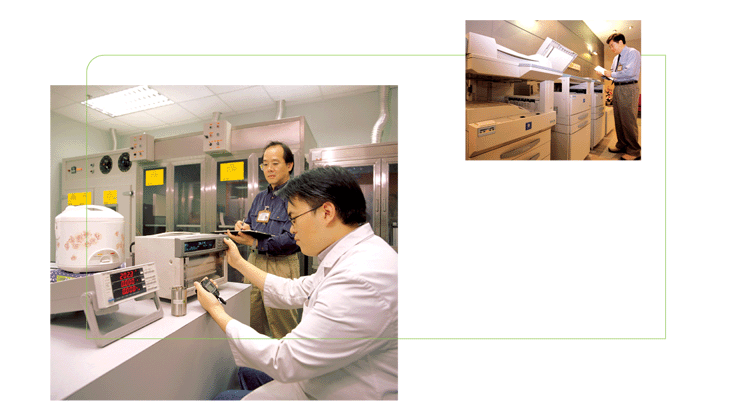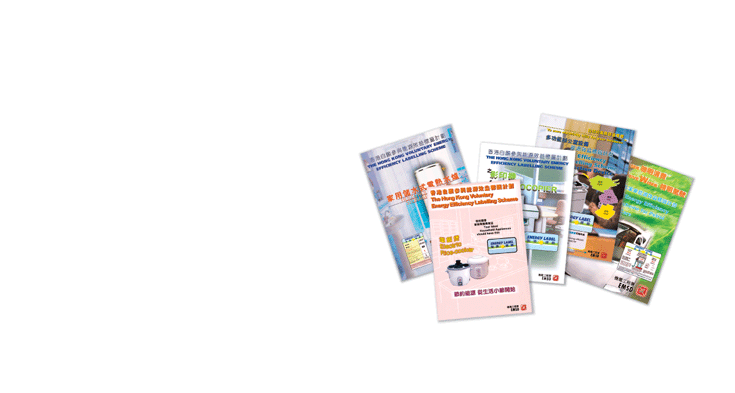The
Energy Efficiency Labelling Scheme has been a success since its inception in
1995.
The
Energy Efficiency Labelling Scheme covers both household appliances and office
equipment.
Wider
Use of Fresh Water in Evaporative Cooling Towers
The
use of evaporative cooling towers was found to be the most convenient way
for building owners to adopt WACS, according to a preliminary study. It will
achieve an energy saving of 7 to 17 per cent when compared with the air-cooled
air-conditioning system, and will significantly reduce greenhouse gas emissions
as well.
An interdepartmental working group coordinated by EMSD launched a two-year
pilot scheme in 2000 to promote the wider use of fresh water in evaporative
cooling towers in non-domestic buildings. It worked to relax the restriction
on banning of use of fresh water for WACS and set up a registration and licensing
system to ensure proper design, operation and maintenance of cooling towers.
The scheme has now been expanded to cover 28 designated areas. At the time
of writing, there were 14 applications with a total floor area of about 800,000
square metres. It is estimated that the annual energy savings would be 9,000
MWh, and that greenhouse gas emissions would be reduced by 5,000 tonnes of
carbon dioxide.
DEMAND
SIDE MANAGEMENT
With
the aim of promoting energy efficiency and conservation, EMSD was tasked with
providing assistance in the development of Demand Side Management (DSM) programmes
with the power companies. Currently there are three main types of DSM programmes
in Hong Kong. Energy Efficiency Programmes actively encourage users to use electricity
wisely and to buy and use energy efficient appliances, thus reducing peak demands
and the overall consumption of electricity. Peak Clipping Programmes encourage
the reduction of electricity demand during peak periods, and Load Shifting Programmes
shift consumption from peak periods to off-peak periods.
The three-year programmes were rolled out in phases from July 2000. The two
rebate programmes for non-domestic customers switching to energy efficient appliances
for lighting, ventilation and air-conditioning were a success. Up to the end
of June 2002, more than 4,000 applications were received and processed, representing
a projected annual energy saving of 154 GWh - equivalent to the annual consumption
of over 25,000 households.
ENERGY
EFFICIENCY LABELLING SCHEME
The
Energy Efficiency Labelling Scheme has been a success since its inception
in 1995 and accounts for about 44 per cent of the estimated total annual energy
saving so far achieved. This year, the scheme was extended to petrol passenger
cars. The transport sector occupies more than one-third of our total energy
consumption and petrol passenger cars make up the majority of registered vehicles
in Hong Kong.
To qualify for registration under the scheme, cars should have vehicle emissions
and fuel consumption test reports issued by recognised laboratories. The scheme
aims to encourage car manufacturers and importers to improve the energy efficiency
of passenger cars supplied to Hong Kong.
In addition to petrol passenger cars, the scheme now covers more than 1,500
products in seven categories of household appliances (household refrigerators,
air-conditioners, washing machines, electric clothes dryers, compact fluorescent
lamps, electric storage water heaters and rice cookers) and two types of office
equipment (photocopiers and multifunction devices). Plans are in hand to include
dehumidifiers and laser printers under the scheme by the end of 2002. Survey
findings show that the market penetration of labelled models with respect
to the total models in the market ranged from 30 to 70 per cent.
P.13





